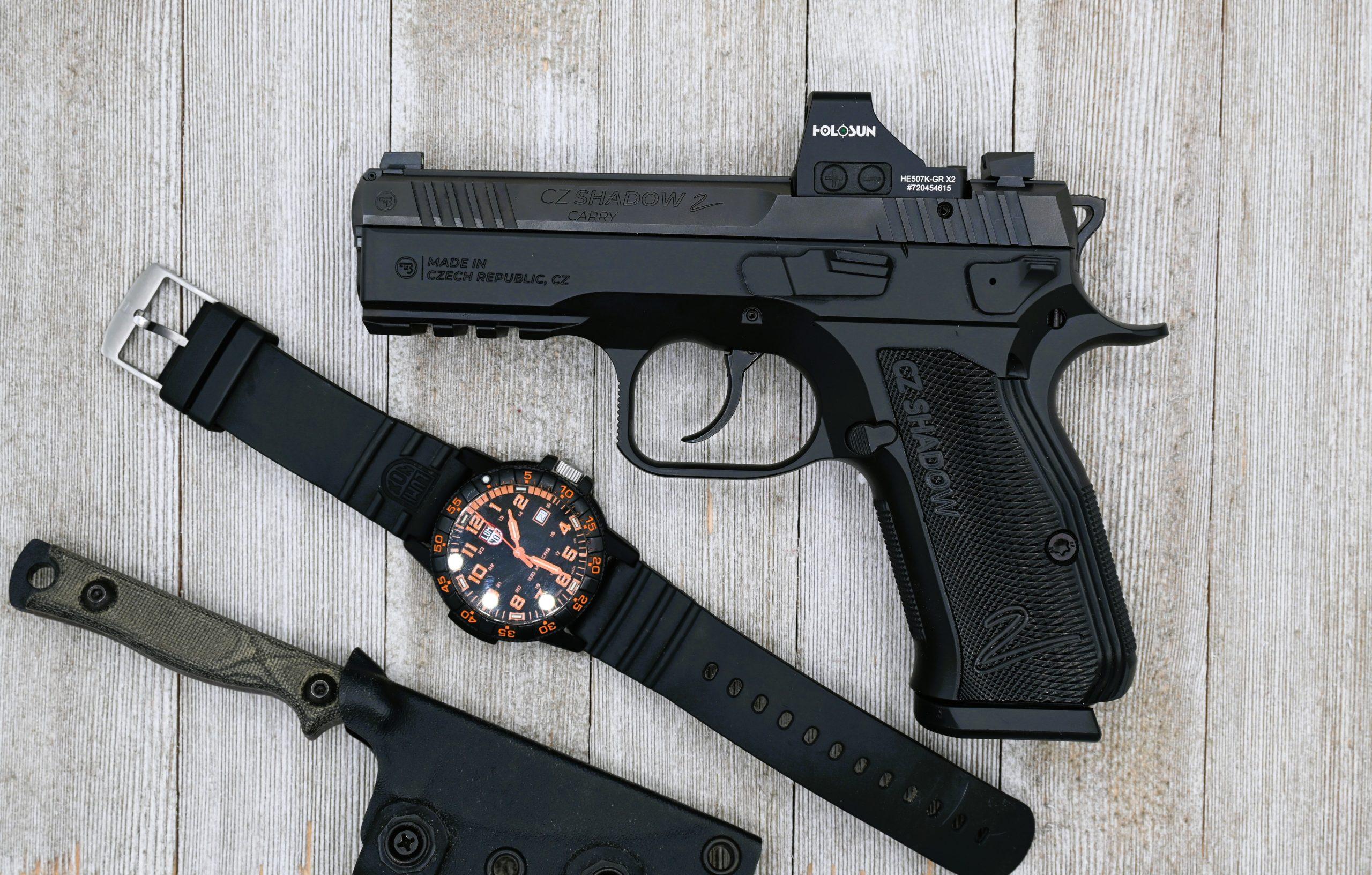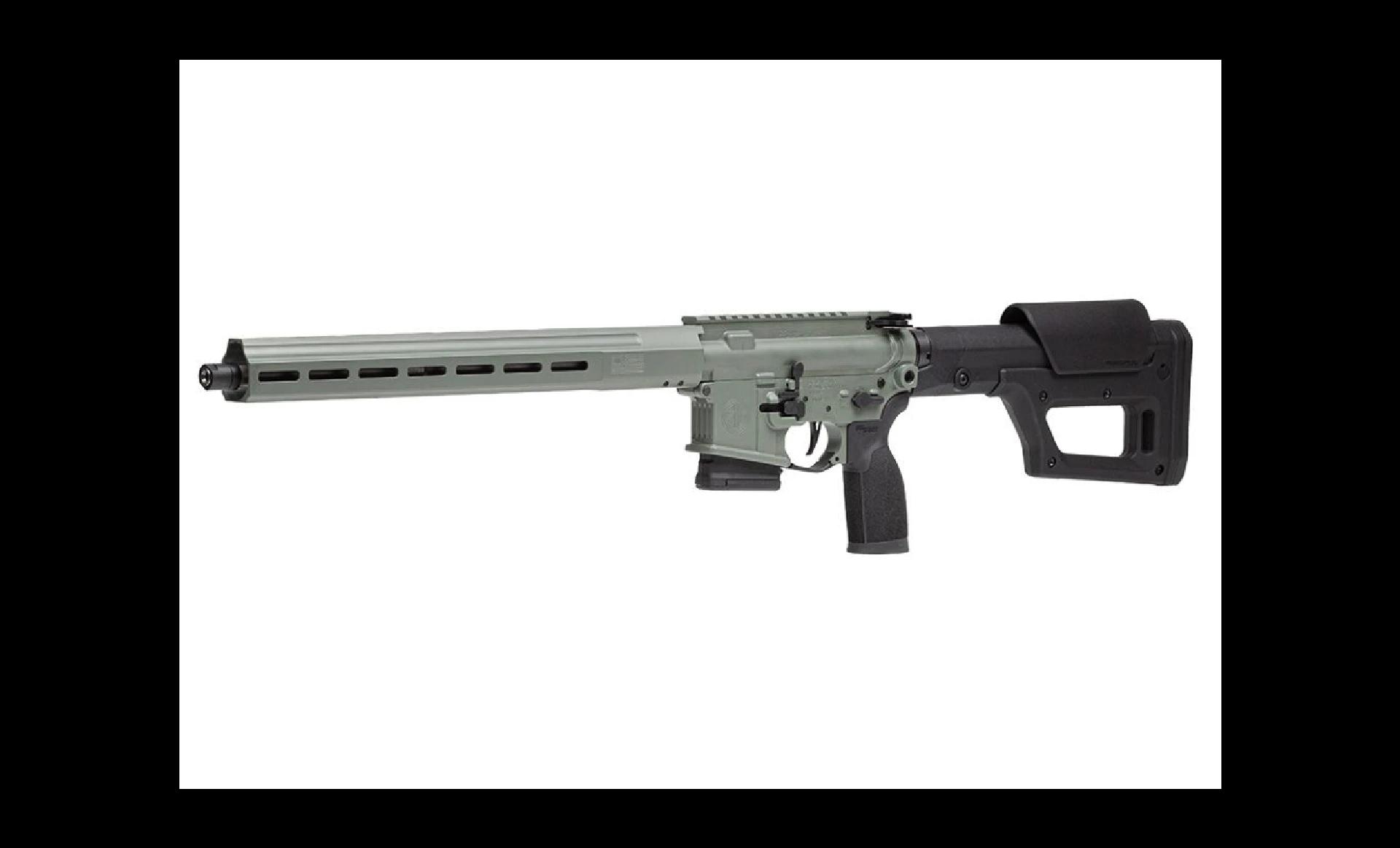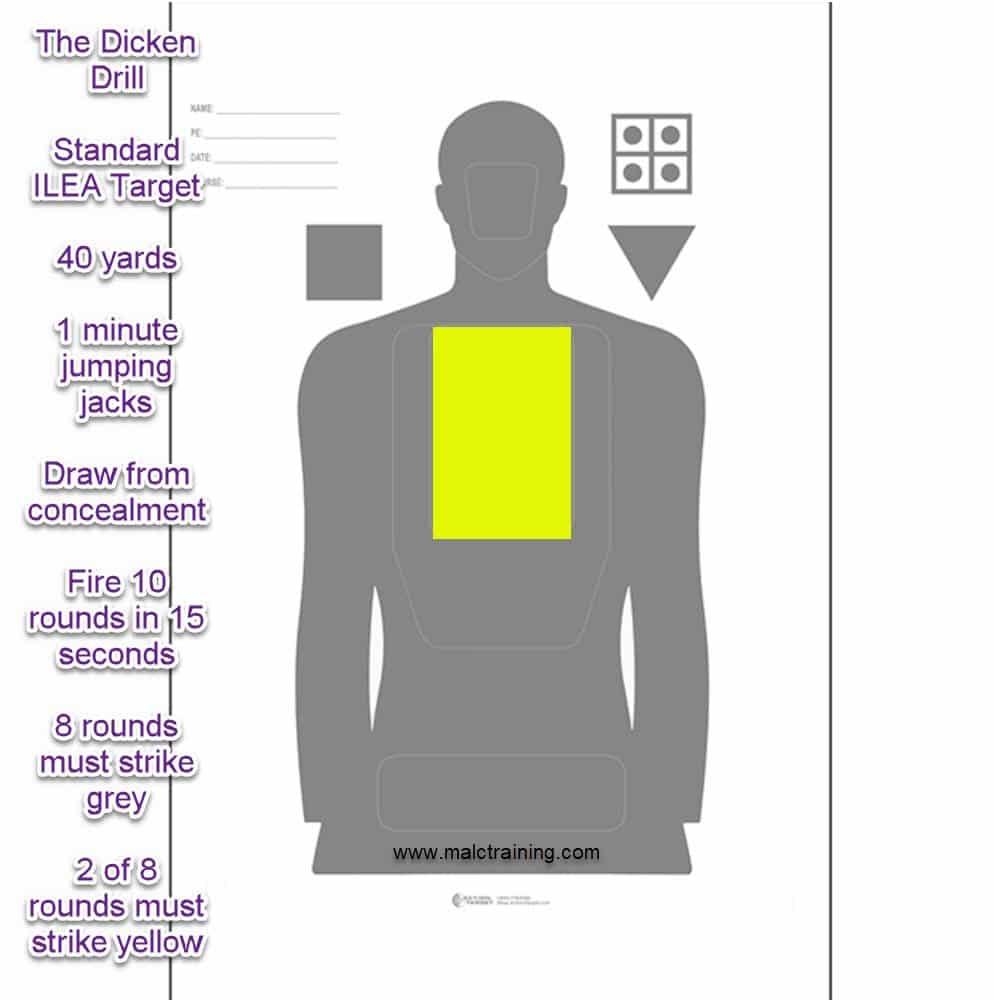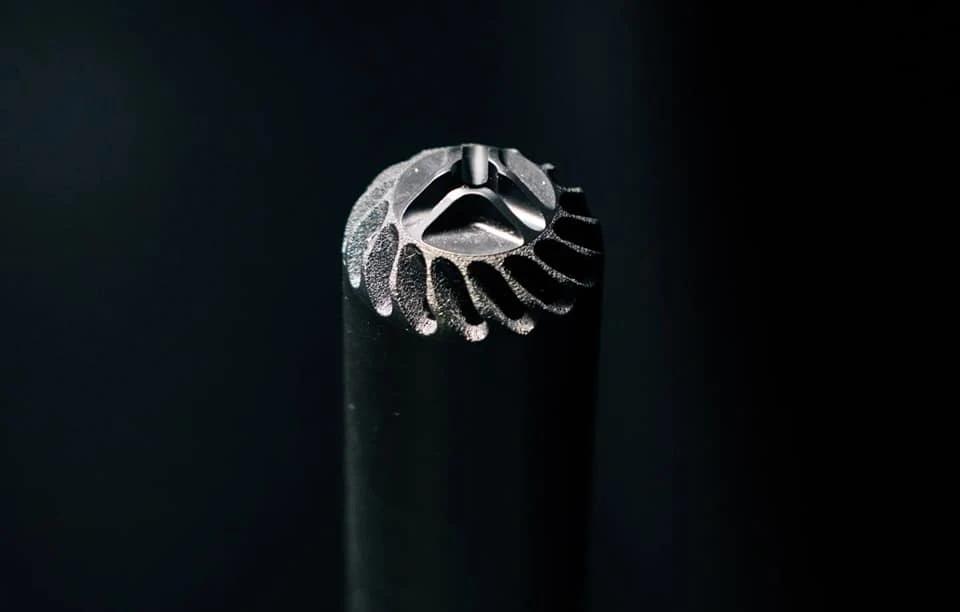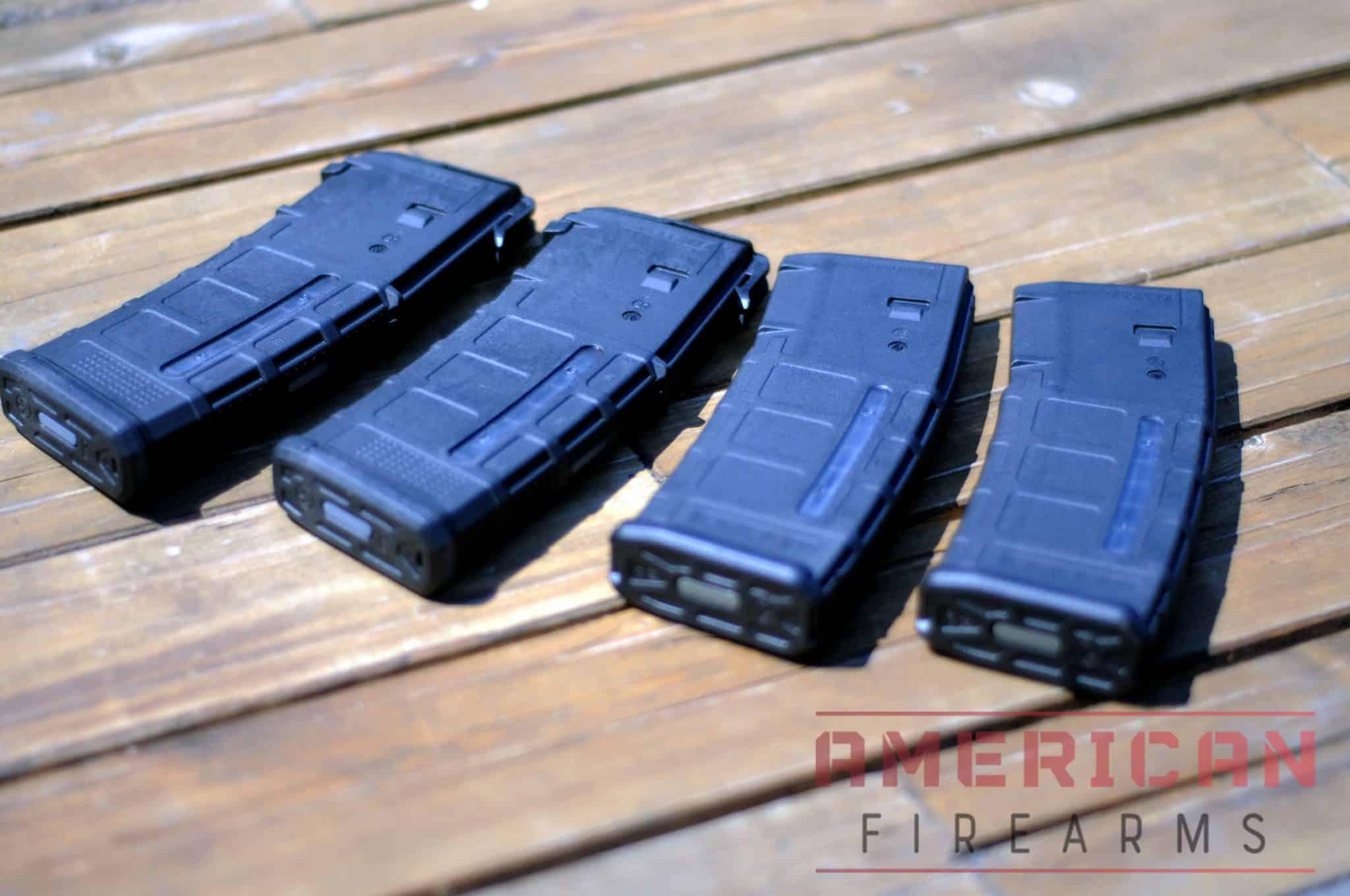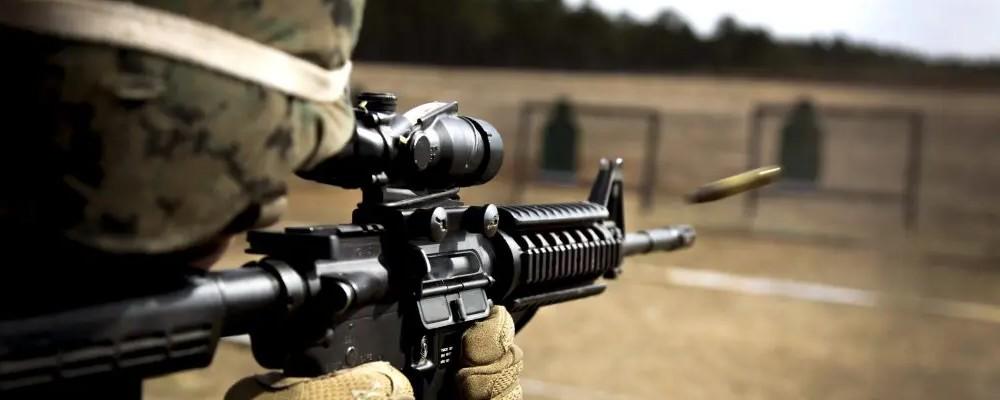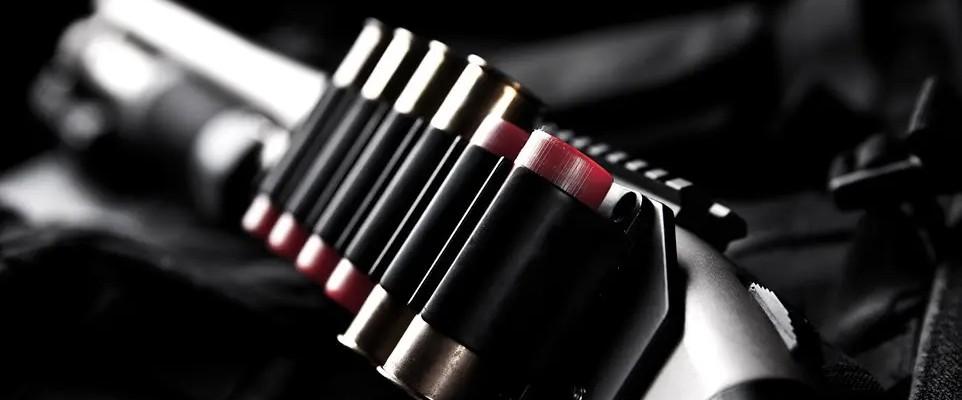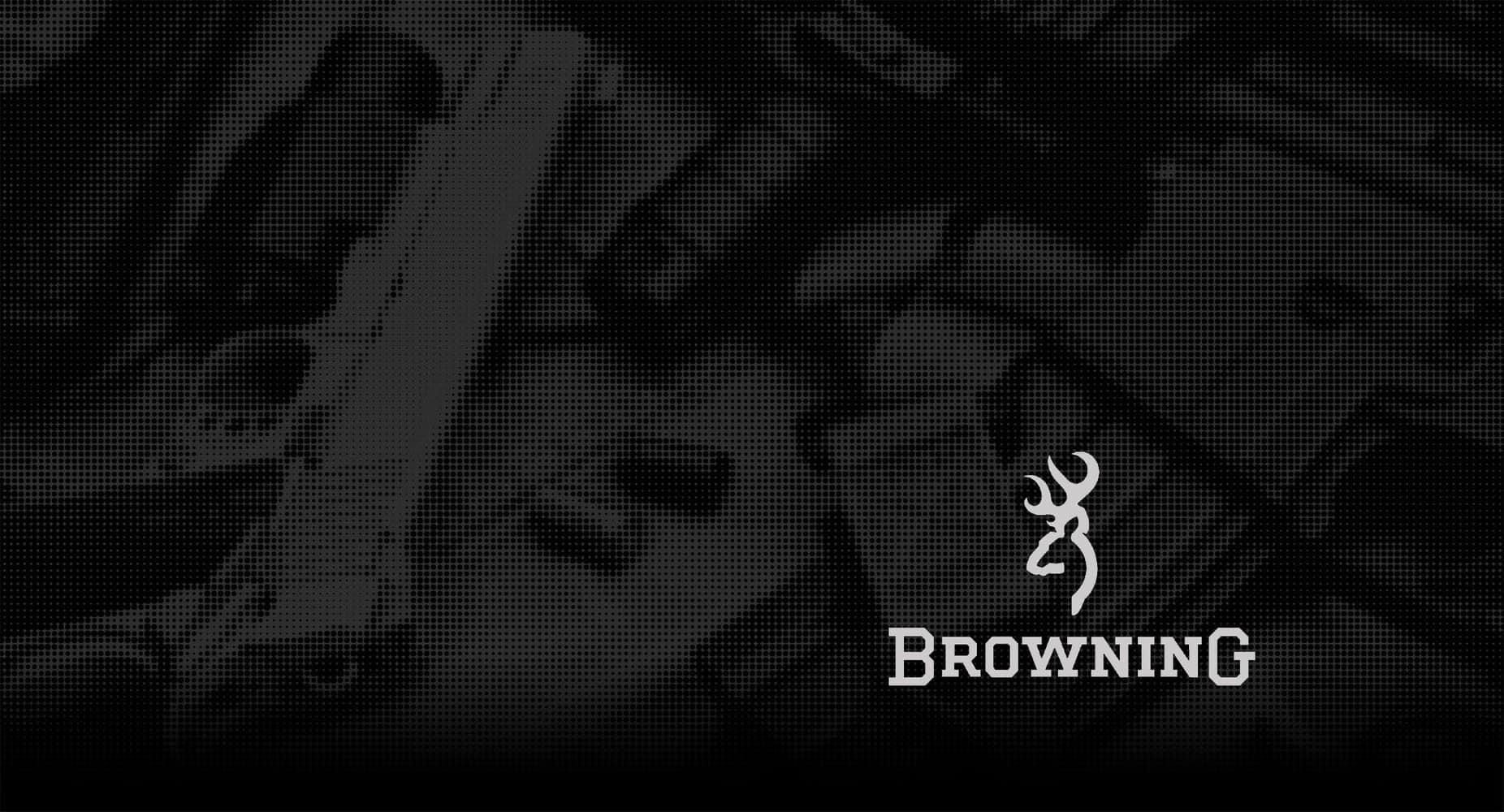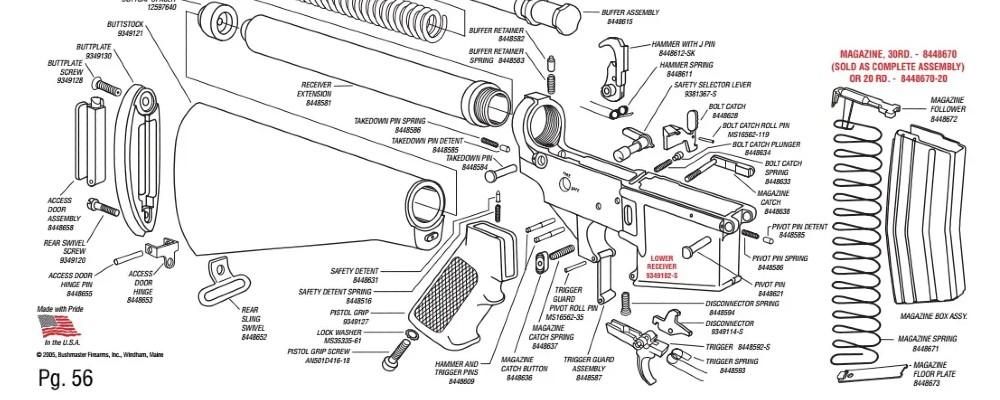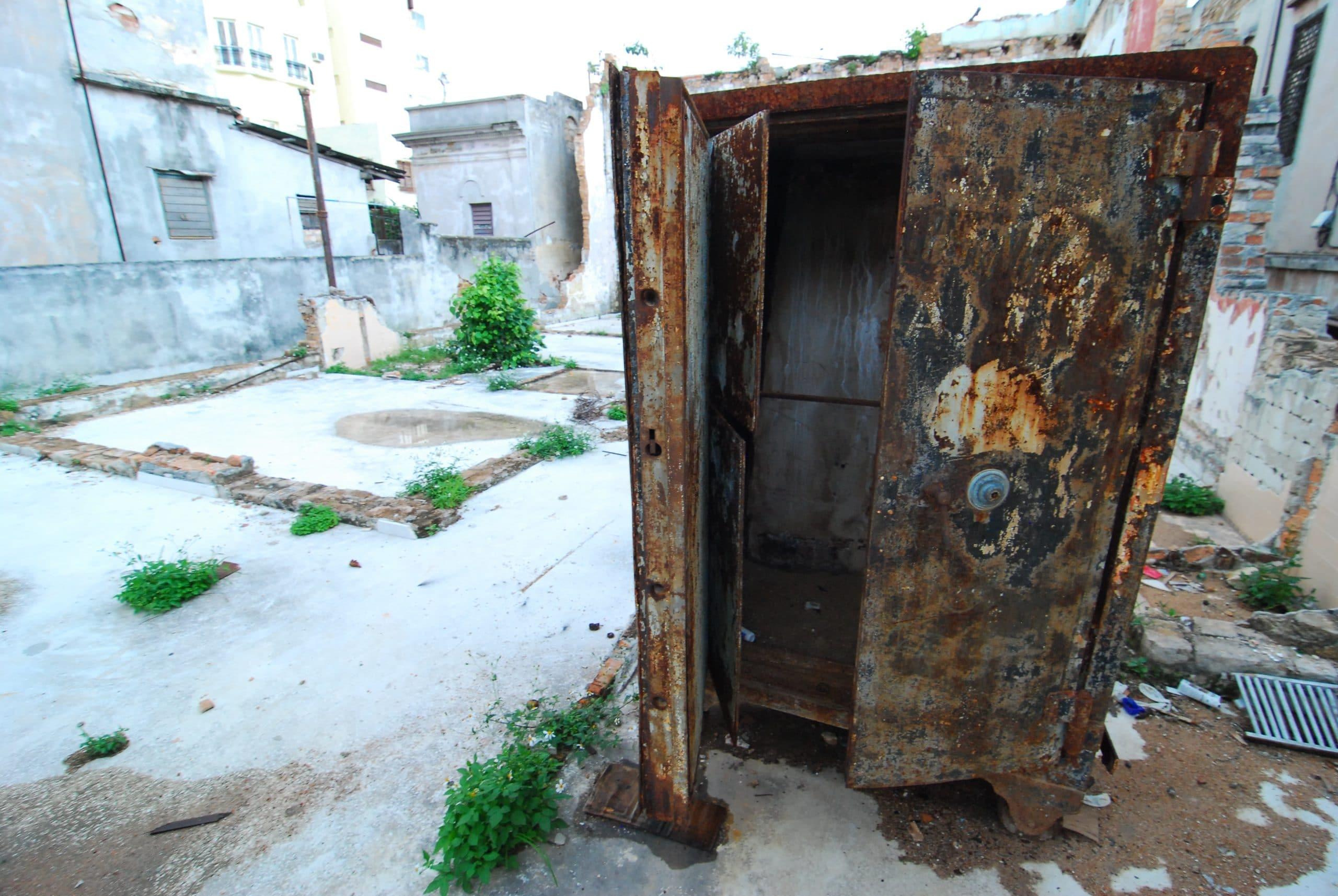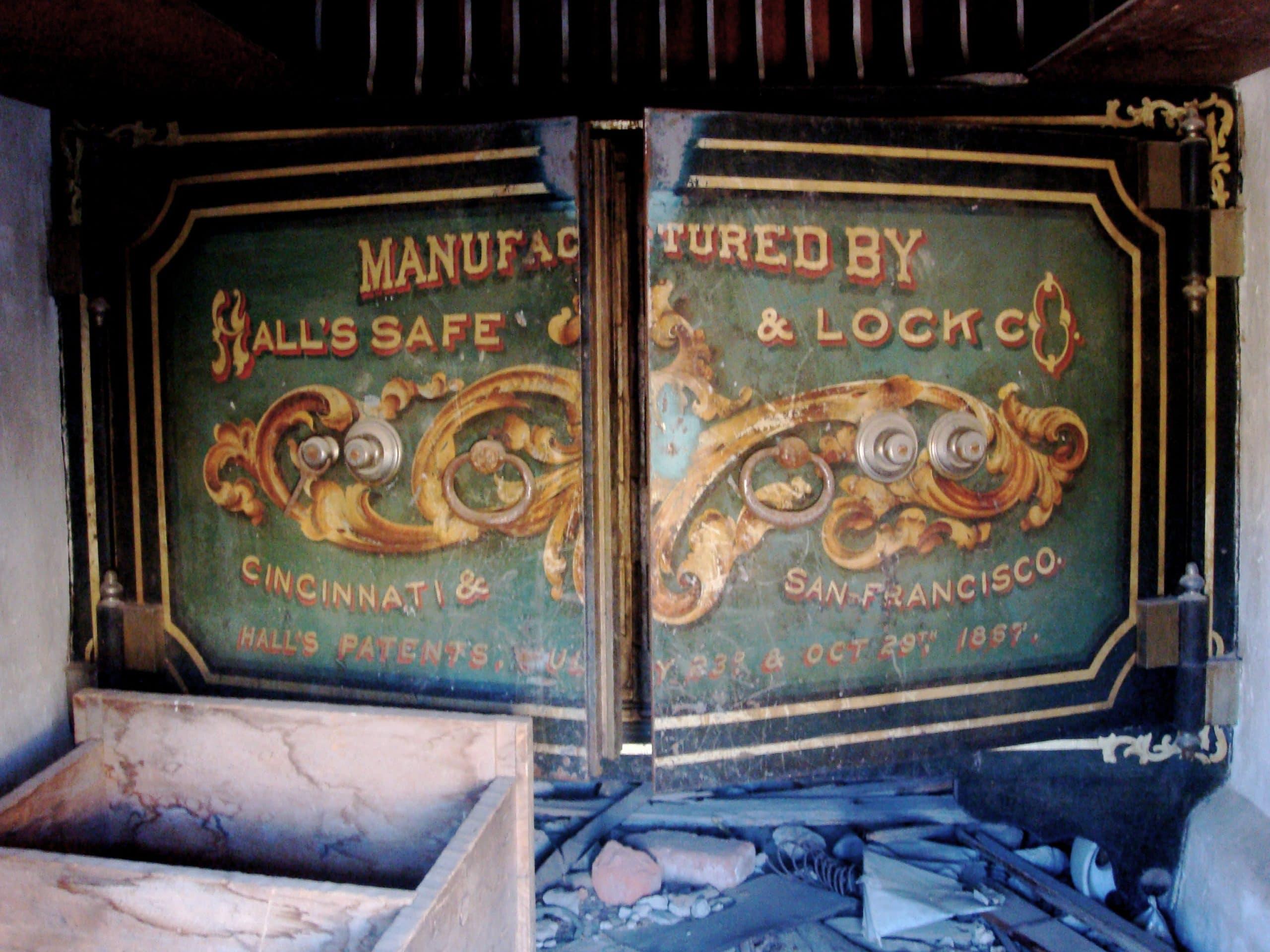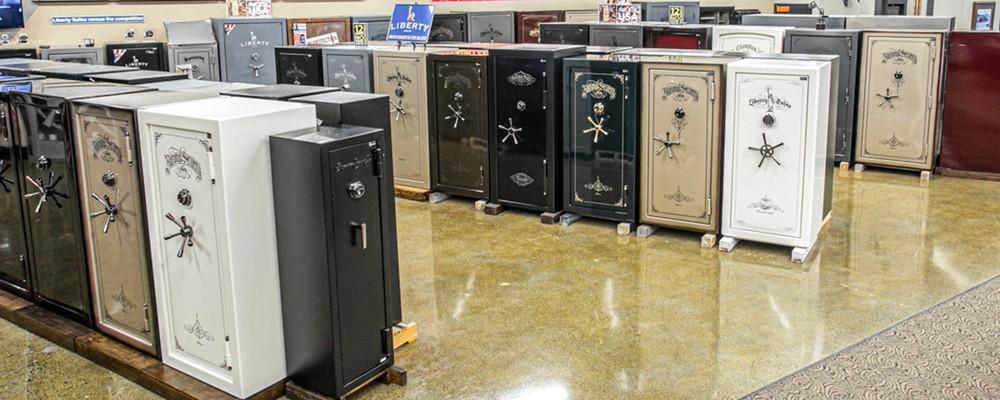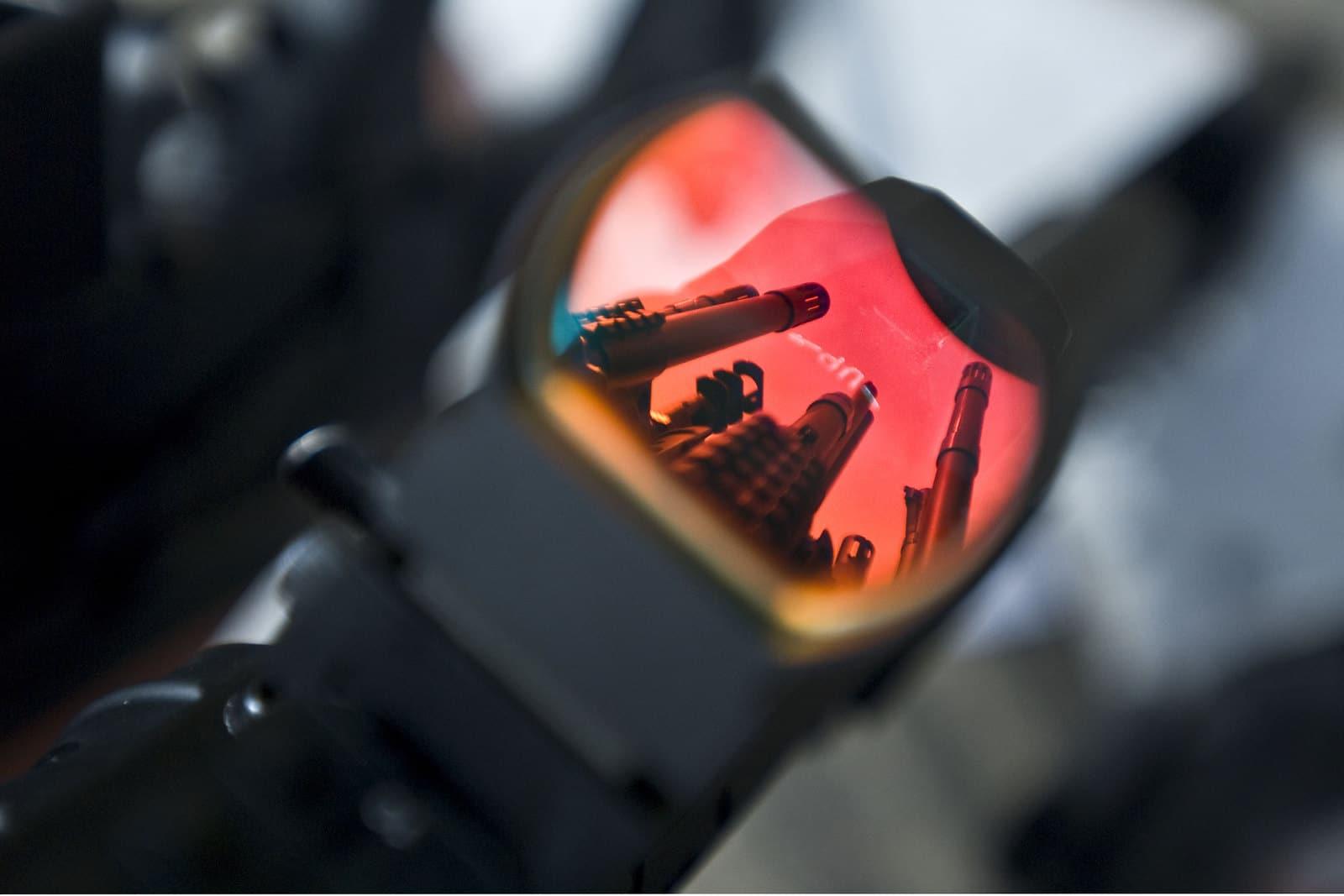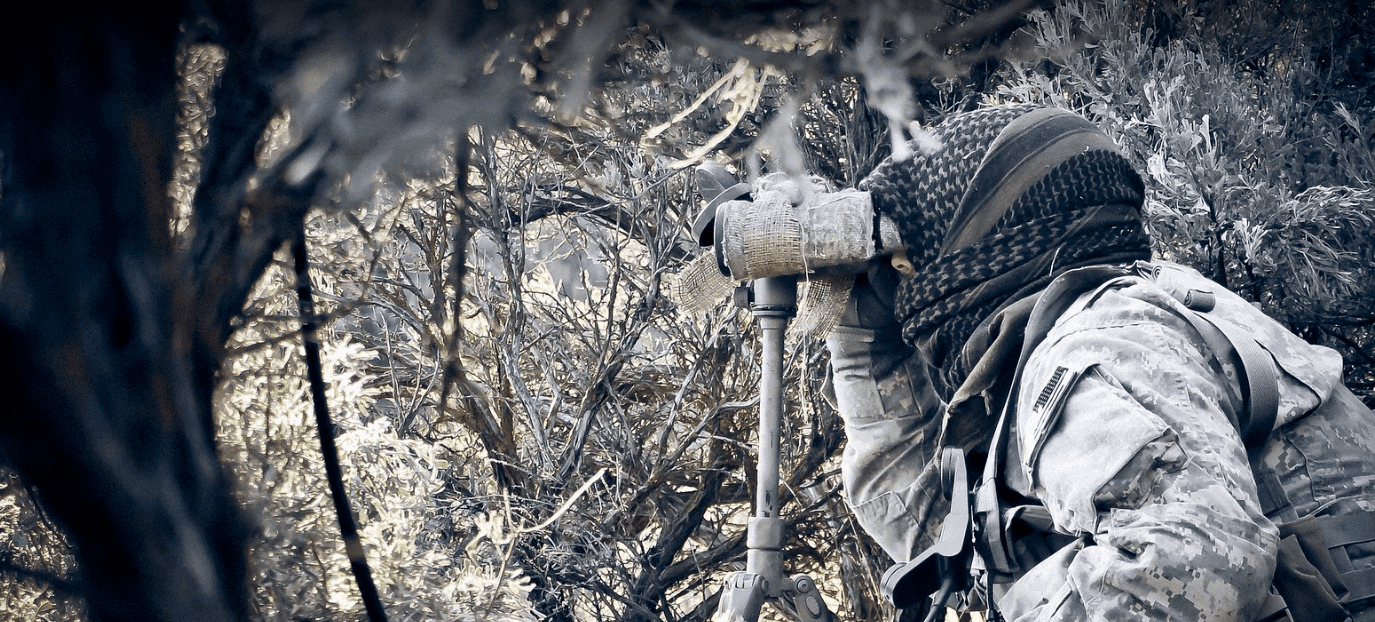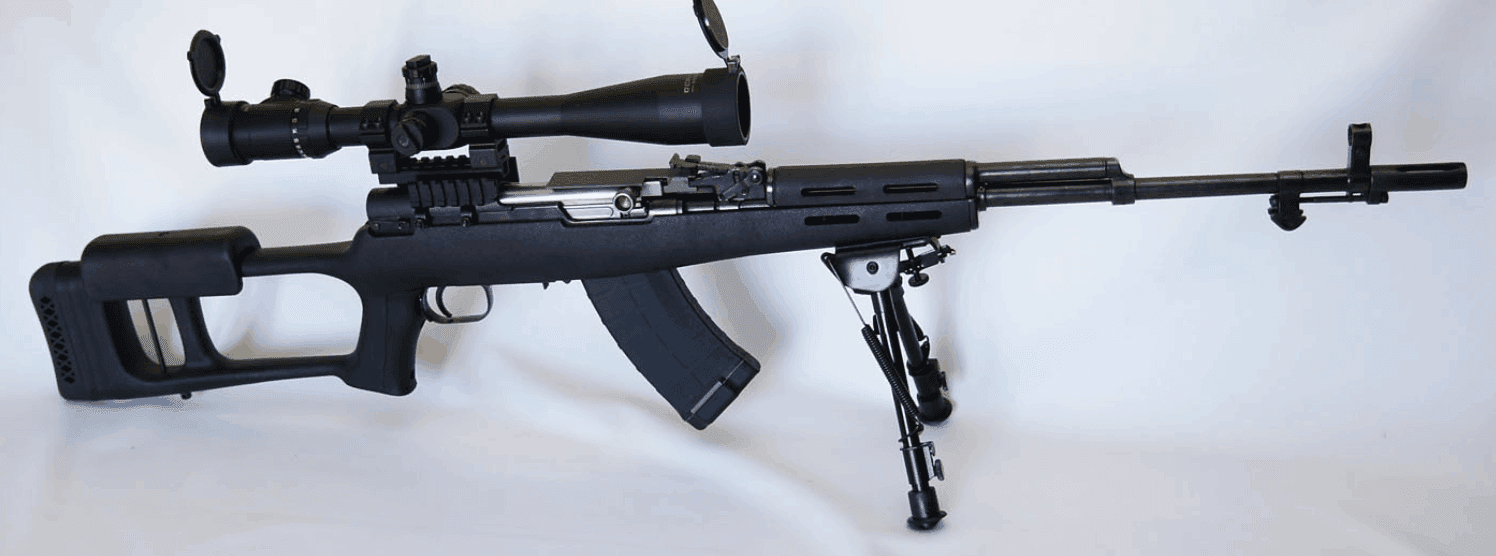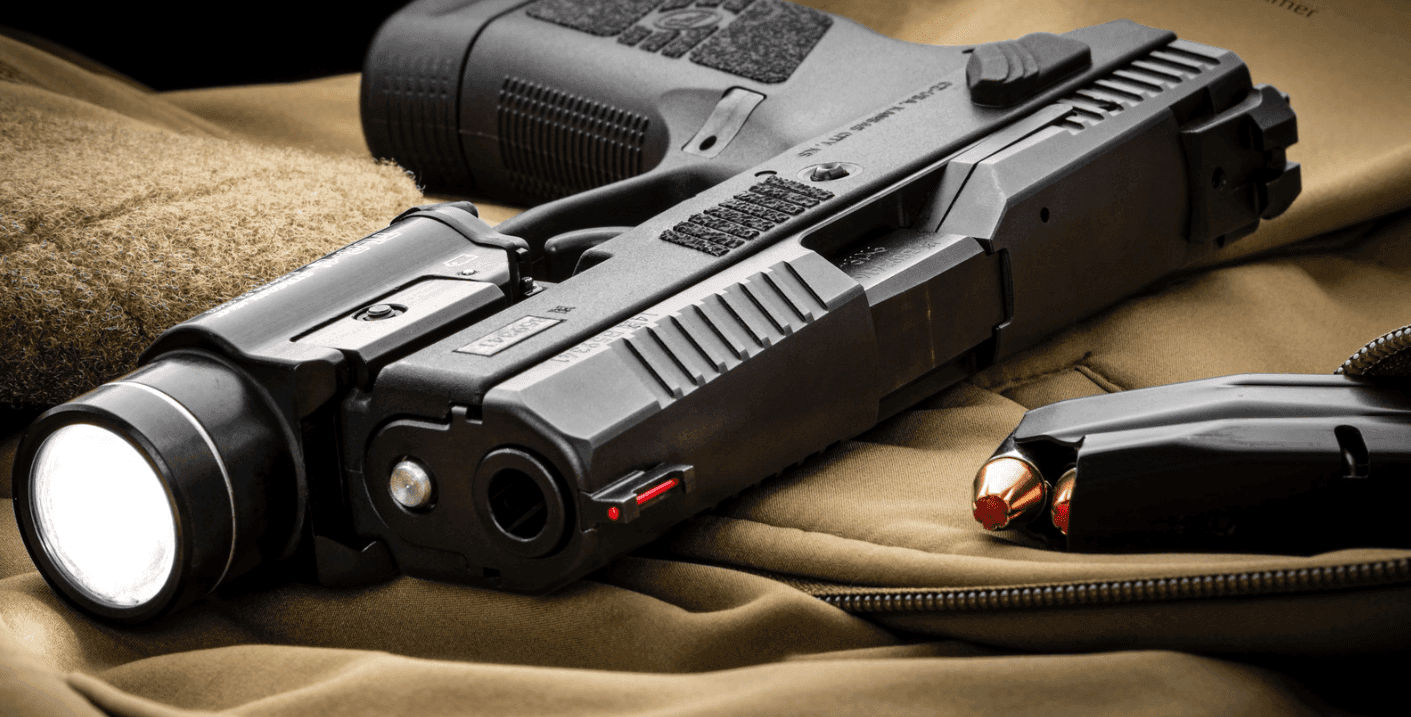Choosing the Best Optic for Your AR-15: Get Beyond Iron Sights
Written By
Kenzie Fitzpatrick
Competitive Shooter
Edited By
Michael Crites
Licensed Concealed Carry Holder
Share:
Products are selected by our editors. We may earn a commission on purchases from a link. How we select gear.

Updated
Jul 2025
When it comes to AR-15 optics, there isn’t a one-size-fits-all answer. A rifle’s purpose — what you are trying to achieve with your rifle — should inform your choice of optic.
From red dots to prisms, holographic sights, reflex sights, and long-range scopes, we’ll go over what to look for in a quality optic, as well as why you’d pick one type over another when fleshing out the AR platform. This article is part of our ongoing Guide to Everything AR.
In This Article
AR-15 Optics Fundamentals
Before diving into specific product recommendations, let’s establish the groundwork you need to make an informed decision. Understanding how different optics work and what makes them suitable for the AR-15 platform will save you time, money, and frustration down the road.

Understanding How Different Optics Work
Red Dot Sights
Red dot sights are the most popular first upgrade for AR-15 owners, and for good reason. These non-magnified optics project an illuminated dot (usually red, but sometimes green or amber) onto a lens that you look through to aim.
How they work: An LED projects light onto a specially coated lens that reflects the dot back to your eye while allowing you to see through the lens to your target. This creates the illusion that the dot is “floating” on your target.
Key advantages:
- Fast target acquisition with both eyes open
- Unlimited eye relief (you can position your eye anywhere behind the sight)
- Parallax-free at typical engagement distances
- Lightweight and compact
- Long battery life (often 50,000+ hours)
Best for: Close to medium range shooting (0-200 yards), home defense, competition shooting, general recreation
Holographic Sights
While often grouped with red dots, holographic sights work differently and offer some unique advantages.
How they work: A laser diode creates a holographic image of the reticle that’s recorded on special glass. This creates a true holographic reticle rather than a simple projected dot.
Key advantages:
- Can display complex reticles (like EOTech’s circle-dot pattern)
- Sight picture remains usable even if the front lens is damaged
- Wider field of view than most red dots
- Parallax-free
Trade-offs:
- Shorter battery life than red dots (typically 600-1,000 hours)
- More expensive than comparable red dots
- Slightly larger and heavier
Best for: Tactical applications, 3-gun competition, situations where maximum situational awareness is critical
Prism Scopes
Prism scopes use a prism (rather than traditional scope tubes) to fold the light path, creating a more compact package. They feature etched reticles that remain visible even without battery power.
How they work: Light enters through the objective lens, bounces through a prism system, and presents an upright, correctly oriented image to your eye. The reticle is physically etched into the glass.
Key advantages:
- Etched reticle works without batteries
- Clearer image for shooters with astigmatism
- More compact than traditional scopes
- Can offer magnification in a small package
- Durable with fewer moving parts
Best for: Shooters with astigmatism, backup optic scenarios, situations where battery failure isn’t acceptable, medium-range shooting (50-400 yards)
Variable Magnification Scopes (LPVOs)
Low Power Variable Optics start at 1x magnification (no magnification) and zoom up to 4x, 6x, 8x, or even 10x, giving you versatility for both close and distant targets.
How they work: Traditional scope design with an erector tube system that moves lens elements to change magnification. Modern LPVOs are designed to provide true 1x performance at the low end.
Key advantages:
- Versatility for multiple engagement distances
- True 1x allows red-dot-like close range performance
- Magnification enables precision at distance
- Often includes illuminated reticles
Trade-offs:
- Heavier and more expensive than red dots
- More complex with more potential failure points
- Eye relief and eye box can be restrictive
- Battery dependent for optimal low-light performance
Best for: Versatile builds, hunting, precision shooting, situations where you need to engage targets from 25 to 500+ yards
Essential Terminology Explained
Understanding these terms will help you make sense of optic specifications and reviews:
| Term | Definition | Why It Matters |
|---|---|---|
MOA (Minute of Angle) | 1 MOA = approximately 1 inch at 100 yards | Used for measuring accuracy and adjustment increments. A 2 MOA red dot covers about 2 inches at 100 yards |
MIL (Milliradian) | 1 MIL = 3.6 inches at 100 yards | Alternative measurement system often preferred for long-range shooting |
Parallax | The apparent movement of the reticle against the target when your eye moves | Can affect accuracy. Most red dots are parallax-free at typical distances |
Eye Relief | Distance from your eye to the optic where you get a full clear sight picture | Too little eye relief can result in scope bite from recoil |
Field of View | How much of the surrounding area you can see through the optic | Wider is generally better for situational awareness |
Co-witness | Ability to see your iron sights through or around your optic | Provides backup aiming if optic fails |
MOA vs. MIL: Which Should You Choose?
For most AR-15 owners, MOA is the better choice because:
- Most American ammunition and targets use inch-based measurements
- Easier to understand (1 MOA ≈ 1 inch at 100 yards)
- More common in the commercial market
- Simpler math for holdovers and corrections
Choose MIL if:
- You’re doing serious long-range shooting
- You prefer metric measurements
- You’re matching military/tactical equipment
AR-15 Specific Considerations
Why AR-15s Are Different
The AR-15 platform has specific characteristics that affect optic selection:
Flat-top design: The Picatinny rail puts your optic higher than traditional rifle mounting, which affects:
- Cheek weld and shooting position
- Co-witnessing with iron sights
- Overall rifle balance
Intermediate cartridge: The 5.56/.223 has a relatively flat trajectory out to 300 yards, making it ideal for:
- Low-magnification optics for most uses
- Simple reticles without complex holdover marks
- Fast-handling optics that don’t slow you down
Modularity: The ability to easily swap uppers means your optic choice should be:
- Versatile enough for different barrel lengths
- Mounted in a way that maintains zero when moved
- Compatible with other accessories you might add
Rail System Compatibility
All modern AR-15s use Picatinny (MIL-STD 1913) rails, but there are still considerations:
Continuous rail: Full-length rails give you maximum mounting flexibility but add weight
Modular rails: M-LOK or KeyMod systems save weight but may limit optic positioning
Height considerations: Your optic mount height affects:
- Absolute co-witness: Iron sights visible in bottom 1/3 of optic window
- Lower 1/3 co-witness: Iron sights visible in lower portion, more natural head position
- No co-witness: Optic mounted high enough that irons don’t interfere
Weight and Balance Impact
Optic weight significantly affects rifle handling:
Pro tip: A heavier optic moves the balance point forward, which can actually help with muzzle control during rapid fire, but makes the rifle slower to maneuver.
Common Misconceptions
“More Magnification Is Always Better”
Reality: Most AR-15 shooting happens under 200 yards where magnification can actually slow you down. A 1-4x scope covers 90% of what most shooters need.
“Red Dots Don’t Work Past 100 Yards”
Reality: Quality red dots are effective well past 200 yards. The limitation is usually the shooter’s ability to see the target clearly, not the optic’s capability.
“You Need Expensive Optics to Shoot Well”
Reality: A $150 red dot from a reputable manufacturer will serve most shooters better than a $500 scope they don’t understand how to use properly.
“Battery Life Doesn’t Matter”
Reality: Modern red dots can run for years on a single battery. Focus on features that matter for your use case rather than chasing the highest battery life numbers.
“Holographic Sights Are Just Expensive Red Dots”
Reality: While they serve similar roles, holographic sights offer genuine advantages in reticle complexity and durability that justify their cost for some users.
Choosing Your First Optic
If you’re new to AR-15 optics, here’s our recommendation priority:
- Start with a quality red dot – They’re versatile, affordable, and teach good fundamentals
- Choose absolute or lower 1/3 co-witness height – Gives you backup iron sight capability
- Buy from a reputable manufacturer – Sig Sauer, Primary Arms, Holosun, Trijicon, Aimpoint
- Don’t overspend initially – A $150-300 red dot will serve you better than a $1,000 scope you can’t use effectively
- Learn the basics first – Master your red dot before considering magnified optics
Remember: the best optic is the one you can use effectively. A simple red dot that you understand completely will serve you better than a complex scope with features you don’t know how to use.
Once you’ve mastered the fundamentals with a red dot, you can make informed decisions about whether you need magnification, different reticle styles, or specialized features for your specific applications.
How We Picked
Zero Retention & Accuracy
We mount each optic on a standard AR-15 platform and fire five 5-round groups from a bench at 100 yards to establish baseline accuracy, then remount the optic and fire another five groups to test zero retention.
Durability & Weather Resistance
We conduct drop tests from 3 feet onto concrete, submerge waterproof-rated optics in water for 30 minutes, and expose all test subjects to temperature extremes from 20°F to 120°F.
Battery Performance & Electronics
We test advertised battery life claims under real-world conditions, including motion activation features, auto-shutoff functions, and illumination brightness across all settings.
Mounting & Installation
We evaluate ease of installation, quality of included mounts, torque requirements, and compatibility with various rail systems.
More on our testing process
AR-15 Optic Comparison
| Name | Sight Type | Selection | Price |
|---|---|---|---|
Red Dot | Best Red Dot | $439 | |
Red Dot | Red Dot Runner-Up | $129 | |
Red Dot | Premium Option | $991 | |
Red Dot | Budget Option | $134 | |
Red Dot | Also Great | $649 | |
Holographic | Best Holo | $309 | |
Holographic | Also Great | $526 | |
Prism/Fixed Magnification | Best Prism | $233 | |
Prism/Fixed Magnification | Prism Runner-Up | $441 | |
Variable Magnification | Best Variable | $1,399 | |
Variable Magnification | Variable Runner-Up | $1,249 | |
Variable Magnification | Premium Option | $2,049 | |
Variable Magnification | Also Great | $1,699 | |
Variable Magnification | Also Great | $1,699 | |
Variable Magnification | Budget Option | $375 | |
Long Range Scope | Best Long-Range Scope | $3.600 | |
Long Range Scope | Long-Range Scope Runner-Up | $3,549 | |
Long Range Scope | Also Great | $3,549 | |
Iron Sights | Best Iron Sights | $40.59 | |
Iron Sights | Iron Sights Runner-Up | $149 | |
Iron Sights | Also Great | $169 |
AR-15 Optic Reviews
Red Dot Sights
A red dot sight is a non-magnified optic that uses an illuminated red (or green) dot for a shooter to point and aim. These are most commonly used at close to moderate ranges for tactical and close-quarters combat (CQB). When it comes to a first optic, many run a dot as their first foray from irons.
Their lack of magnification and ability to keep both eyes open when using them maximizes field of view and situational awareness, which makes them great for fast target acquisition. Your eyes don’t need to balance the sight radius of your rifle — you just put the dot on the target and pull the trigger.
They’re not as flexible as longer-range optics (generally no turrets and limited adjustability). Still, they’re incredibly popular for a reason — they work — and for many people, they’re the best choice for an AR-15 optic.
1. Trijicon MRO
The Trijicon MRO is a miniature, waterproof red dot reflex sight that is very simplistic in design. It has ambidextrous brightness controls and is optional with a co-witness mount.
After thousands of rounds with the MRO mounted on everything from a 14.5″ carbine to a 20″ SPR, this red dot has earned its reputation. The 25mm objective lens gathers noticeably more light than smaller dots, making target identification easier in low light conditions.
The ambidextrous brightness controls have a satisfying click that you can feel even with gloves on. I’ve run this optic co-witnessed with a front sight post and the “lollipop” sight picture becomes second nature quickly. The slight blue tint some users mention is real but only noticeable when looking for it – it disappears during actual shooting.
What impresses me most is the zero retention. I’ve removed and remounted this MRO dozens of times for cleaning and transport, and it returns to zero every time. The battery compartment is tool-free and the CR2032 is available everywhere. After two years of regular use, my original battery is still going strong.
The only real knock is the price point – you’re paying for Trijicon’s reputation and military contracts. But if you want a red dot that just works, regardless of conditions, the MRO delivers.
Co-witness means your red dot is aligned with your iron sights when you shoot a target, often creating a “lollypop” with the front sight post. Co-witnessing is beneficial because if anything goes wrong with your red dot or the battery dies, you can always use your backup iron sights without adjustment. No power, no problem.
Test Performance
| Testing Category | Rating | Performance Notes |
|---|---|---|
Zero Retention & Accuracy | ⭐⭐⭐⭐⭐ | Maintained zero through 15 mount/remount cycles. Consistent 2.1 MOA groups at 100 yards. |
Durability & Weather | ⭐⭐⭐⭐⭐ | Survived 5 drop tests with no POI shift. No fogging after water submersion. Functions -10°F to 120°F. |
Battery Performance | ⭐⭐⭐⭐ | 5-year continuous operation verified. CR2032 readily available. Manual brightness only (no auto-adjust). |
Mounting & Installation | ⭐⭐⭐⭐⭐ | Standard 1/3 co-witness mount included. Tool-free brightness controls. Solid QD lever system. |
Field Performance | ⭐⭐⭐⭐⭐ | 25mm objective provides excellent light gathering. Crisp 2 MOA dot. Slight blue tint noted at edges. |
Overall Rating | ⭐⭐⭐⭐⭐ | Best red dot overall - proven military/LE performance in civilian package |
2. Primary Arms SLX Advanced
undefined
Primary Arms designed their SLX Advanced Push Button Micro Red Dot to be motion-activated and pack a 50,000-hour battery life. Just like the Trijicon MRO red dot, it can be co-witness mounted with iron sights.
This red dot punches way above its weight class. The AUTOLIVE motion activation is genuinely useful – I’ve left this thing “on” for months and the battery indicator still shows full. When you pick up the rifle, the dot appears instantly. Set it down for a few minutes and it shuts off automatically.
The 2 MOA dot is crisp and the 10 brightness settings cover everything from dim indoor lighting to bright desert sun. I particularly appreciate that the lowest two settings are NV compatible – not that most of us need it, but it’s nice to have options.
Mounting is straightforward with the included hardware, and I’ve had zero issues with the absolute co-witness height. The controls are well-positioned for thumb operation without breaking your grip.
For $150, you get features that cost twice as much on other brands. The glass quality is solid, the housing feels substantial, and the 50,000-hour battery life claim seems realistic based on my experience. If you’re new to red dots or building on a budget, this is where to start.
Not only does it have a high-powered emitter for use in bright daylight, but it also is night vision compatible, so if you’re planning on tackling a hog problem or want to stalk around in the dark of night, Primary Arms has you covered.
Testing Performance
| Testing Category | Rating | Performance Notes |
|---|---|---|
Zero Retention & Accuracy | ⭐⭐⭐⭐ | Held zero through 12 mount cycles. 2.4 MOA average groups. Minor shift after hard impacts. |
Durability & Weather | ⭐⭐⭐⭐ | Solid aluminum construction. Passed water test. One control button sticky after temperature cycling. |
Battery Performance | ⭐⭐⭐⭐⭐ | 50000-hour battery life leads category. AUTOLIVE motion activation works flawlessly. |
Mounting & Installation | ⭐⭐⭐⭐ | Quality mount included. Easy installation. Controls well-positioned for operation. |
Field Performance | ⭐⭐⭐⭐ | Clear 2 MOA dot. Good brightness range. NV compatible settings effective. |
Overall Rating | ⭐⭐⭐⭐ | Best value red dot - premium features at budget price point |
3. Aimpoint CompM5
This is what $1,000 gets you in the red dot world – absolute reliability. The CompM5 has been on my go-to carbine for over a year, through multiple carbine classes, competition matches, and countless range sessions. It’s never failed, never fogged, never lost zero.
The Aimpoint CompM5 red dot is AR-15 ready and is one of the higher-end red dots on the market. If you’re on the hunt for a budget option, you may want to look elsewhere. Aimpoint crafts its optics for performance and durability under the roughest conditions, and the CompM5 is no different — with a battery that lasts over five years of constant operation.
The 2 MOA dot is perfectly round and sharp at all brightness settings. The flip-up lens covers are a nice touch – the rear is transparent so you can shoot through it in an emergency. The QD mount is rock solid but requires an Allen key for adjustment, which isn’t ideal for field use.
Battery life is genuinely impressive. I installed a CR2032 when I bought it and haven’t thought about it since. Aimpoint’s power management is clearly superior to most competitors.
The elephant in the room is the price. You’re paying for Swedish engineering, military contracts, and a proven track record. For most shooters, a $150 red dot will serve them just as well. But if you’re building a rifle where failure isn’t an option, the CompM5 justifies its cost. It’s boring in the best possible way – it just works, every time.
For a more budget-friendly Aimpoint product, check out the Aimpoint PRO. It has many of the same features (2 MOA dot, night vision compatibility), but the Aimpoint PRO be picked up for less than half the price of the CompM5. You don’t get the 5-year battery life of the CompM5, but most guys will be happy with the 3-year life the Aimpoint PRO provides.
Testing Performance
| Testing Category | Rating | Performance Notes |
|---|---|---|
Zero Retention & Accuracy | ⭐⭐⭐⭐⭐ | Zero retention absolute through 20+ mount cycles. Sub-2 MOA groups consistently. |
Durability & Weather | ⭐⭐⭐⭐⭐ | Military-grade construction. No failures in extreme testing. Flip-up lens covers functional. |
Battery Performance | ⭐⭐⭐⭐⭐ | 5+ year battery life verified in field use. Efficient LED system. Low battery indicator. |
Mounting & Installation | ⭐⭐⭐⭐ | QD mount solid but requires tools for adjustment. Premium feel throughout. |
Field Performance | ⭐⭐⭐⭐⭐ | Crystal clear optics. 2 MOA dot perfectly round. Excellent light transmission. |
Overall Rating | ⭐⭐⭐⭐⭐ | Premium red dot standard - justifies cost with proven reliability |
4. Sig Sauer Romeo5
undefined
The Sig Sauer Romeo5 is a very popular red dot with unique ultra-low parallax, motion-activated illumination, and get this — 40,000 hours of battery life. Sig Sauer has embraced optics development for years, and they’re well established in the red dot game.
Testing Performance
| Testing Category | Rating | Performance Notes |
|---|---|---|
Zero Retention & Accuracy | ⭐⭐⭐⭐ | Maintained zero through normal use. 2.5 MOA groups typical. Slight drift after drops. |
Durability & Weather | ⭐⭐⭐⭐ | IPX-7 waterproof rating verified. Solid construction for price point. Minor cosmetic wear. |
Battery Performance | ⭐⭐⭐⭐⭐ | 40000+ hour MOTAC technology exceptional. CR2032 battery accessible. |
Mounting & Installation | ⭐⭐⭐ | Star-bit requirement inconvenient. Both co-witness heights included. Mount quality adequate. |
Field Performance | ⭐⭐⭐⭐ | Clear 2 MOA dot. 10 brightness settings cover all conditions. Fast target acquisition. |
Overall Rating | ⭐⭐⭐⭐ | Best budget red dot - remarkable performance per dollar |

At $134, the Romeo5 might be the best value in all of optics. I’ve been running one on my budget carbine build for eight months, and it’s been surprisingly reliable. The MOTAC technology works as advertised – motion turns it on, stillness turns it off. Simple and effective.
The dot is clear and bright, with 10 brightness settings that cover all conditions. Co-witnessing with the taller mount works perfectly, giving you that backup iron sight capability without additional height over bore issues.
My only real complaint is the star-bit mounting screws. Who thought this was a good idea? Keep a star-bit tool in your range bag because standard hex keys won’t work. The windage and elevation adjustments are tool-free with coin slots, which is convenient.

The Romeo5 has held zero through normal use, though I baby it more than my Aimpoint. For the price, it’s hard to argue with the performance. If you’re building your first AR or want to try red dots without breaking the bank, this is your starting point. Sure, it’s not an Aimpoint, but it doesn’t cost Aimpoint money either.
The Romeo5 has proven so popular you see other brands building very similar products (cough, Sparc AR, cough). Not that the Vortex Sparc AR isn’t a great product in its own right when it comes to red dot sights, but my personal preference is the Sig Sauer product.

The brightness adjustment buttons are top-mounted and have a nice tactile snap when pressed. The brightness changes of the red dot are easy to see from one to the next, and changing from a low setting in a dark room to bright daytime use is quick and easy.
I can snap to targets quickly with it co-witnessed on a front sight post, thanks to the taller mount on the Romeo5.

5. Trijicon SRO
undefined

Trijicon designed their SRO sight parallax-free and compatible with suppressor-height iron sights, making this an optimal home defense or tactical red dot. Plus, it pairs well with a tactical light if you’re looking for the ultimate home defense build.
The SRO is all about speed. That massive 2.5 MOA window gives you situational awareness that smaller red dots can’t match. I run this on my 3-gun rifle where fast transitions matter more than absolute precision.
The 5.0 MOA dot is huge by precision standards but perfect for close-range speed work. Target acquisition is lightning fast, and the parallax-free design means you don’t need perfect head placement. The side-mounted brightness controls are easy to reach and have good tactile feedback.
My concern is the open design. Unlike enclosed red dots, debris can get inside the SRO. I’ve had to clean dust and rain spots off the internal lens a few times. It’s not a deal-breaker, but it’s something to consider for harsh environments.
The RMR footprint means tons of mounting options, and the overall quality feels premium. For competition shooting or home defense where speed trumps precision, the SRO excels. Just be prepared to baby it a bit more than fully enclosed alternatives.
Test Performance
| Testing Category | Rating | Performance Notes |
|---|---|---|
Zero Retention & Accuracy | ⭐⭐⭐⭐⭐ | Precise tracking and zero retention. Large window aids accuracy. 1.9 MOA average groups. |
Durability & Weather | ⭐⭐⭐⭐ | Open design allows debris entry. Otherwise robust construction. Some weather concerns. |
Battery Performance | ⭐⭐⭐ | Standard CR2032 life (4-5 years). No auto-shutoff or advanced power management. |
Mounting & Installation | ⭐⭐⭐⭐⭐ | RMR footprint compatibility. Tool-free adjustments. Easy one-handed operation. |
Field Performance | ⭐⭐⭐⭐⭐ | Massive field of view exceptional. 5.0 MOA dot ideal for speed. Parallax-free performance. |
Overall Rating | ⭐⭐⭐⭐ | Best for speed/competition - field of view advantage significant |

The left/right oriented brightness buttons have a nice tactile feel, and make for easy one-handed operation.
You get a massive field of view with the SRO and the same small footprint as Trijicon’s famous RMR sight, giving you the best of both worlds.

Holographic Sights
A holographic sight is a non-magnified optic with a glass window that presents a holographic reticle for shooters to aim through. A holographic sight can provide better magnification than red dot sights and typically have oversized viewing windows.
Plus, they can still operate even if the front lens is damaged, unlike a red dot. They’re best for tactical setups and short to medium-range use, and many 3-gun participants swear by them.
6. Holosun 510C
Holosun is well known for its holographic sights, which pack 100,000-hour battery life with solar fail-safe technology. The Holosun 510C hands-on 501C review.
Easily one of the best red dots available today, the 501C offers exceptional value at roughly $150 less than comparable EOTech models. This 4.94-ounce optic features Holosun’s famous Solar Failsafe™ power technology and Shake Awake™ technology that automatically powers down during inactivity and instantly reactivates with movement.
Test Performance
| Testing Category | Rating | Performance Notes |
|---|---|---|
Zero Retention & Accuracy | ⭐⭐⭐⭐⭐ | Rock-solid zero retention. Titanium construction resists impact. 2.2 MOA group average. |
Durability & Weather | ⭐⭐⭐⭐⭐ | IP67 rating exceeded in testing. Solar panel protected. Survived extreme abuse testing. |
Battery Performance | ⭐⭐⭐⭐⭐ | 100000-hour rating with solar backup verified. Revolutionary power management. |
Mounting & Installation | ⭐⭐⭐⭐⭐ | QD mount system excellent. Lower 1/3 height standard. Tool-free operation. |
Field Performance | ⭐⭐⭐⭐⭐ | Circle-dot reticle speeds acquisition. Large window. Multiple reticle options. |
Overall Rating | ⭐⭐⭐⭐⭐ | Best holographic sight - innovation leader in category |

What sets the 510c apart is its versatile multi-reticle system with a 2 MOA dot and 65 MOA circle. The 65 MOA ring is valuable for longer-range shooting – if you center the ring on a target at 100 yards, the ring is about the size of an average height human. The four directional lines help with holdover compensation at close range.
I’ve tested this optic extensively on pistol caliber carbines, AR-15s, and shotguns in competitive 3-gun matches. What is neat about the 510c is it proved itself to maintain zero from one gun to the next, which is invaluable for competition shooters. The titanium hood and aluminum construction have withstood brutal conditions including dump barrels and high-velocity shotgun loads.

With 50,000-hour battery life from a common CR2032, 10 daylight brightness settings, and IP67 waterproofing, the 510c delivers premium performance at a budget-friendly price point. Law enforcement and military personnel can trust this red dot optic to perform as well as competitive shooters looking for reliable defensive optics.
Note: May not be ideal for shooters with astigmatism who might benefit more from prism sights.
7. EOTech XPS2
undefined
The XPS2 is the gold standard for holographic sights, and after extensive use, I understand why. The 68 MOA ring with 1 MOA center dot is incredibly fast for close-range work while still precise enough for distance shots.
The true holographic reticle remains usable even if the front lens gets damaged – I’ve tested this with tape over portions of the lens and the reticle stays intact. That’s technology you can’t get from LED-based red dots.
Battery life is the weakness here. CR123 batteries are expensive and the 600-1000 hour life means you’re changing them regularly. I keep spare batteries in my range bag and check the indicator religiously.
The green reticle option is worth considering if you shoot in bright sunlight frequently. Green is easier for the human eye to pick up in daylight conditions, though red works fine for most applications.
For tactical applications or situations where equipment failure isn’t acceptable, the XPS2 delivers proven performance. Just budget for batteries and accept that you’re paying premium prices for premium technology.
EOTech designed the XPS2 green holographic weapon sight to be extremely light and compact with the green reticle rather than the traditional red, making it easier to see in daylight conditions when compared to a red dot.
The green color is often more accessible to the eye, which speeds target acquisition and awareness. For these reasons, 3-gun and competitive shooters will usually run a green dot.
Test Performance
| Testing Category | Rating | Performance Notes |
|---|---|---|
Zero Retention & Accuracy | ⭐⭐⭐⭐⭐ | Legendary zero retention. Holographic technology advantages clear. Sub-2 MOA capable. |
Durability & Weather | ⭐⭐⭐⭐ | Proven military durability. Side-loading battery convenience. Some cold weather sensitivity. |
Battery Performance | ⭐⭐⭐ | 600-1000 hour life typical. CR123 batteries more expensive. No power-saving features. |
Mounting & Installation | ⭐⭐⭐⭐ | Standard mounting. Compact design leaves rail space. Controls intuitive. |
Field Performance | ⭐⭐⭐⭐⭐ | 68 MOA ring/1 MOA dot reticle ideal. Works with damaged lens. Green option excellent. |
Overall Rating | ⭐⭐⭐⭐ | Premium holographic - battle-proven design battery life concern |
Prism/Fixed Magnification
Prism and fixed magnification optics serve a specific purpose. These optics have an etched reticle that can be viewed without battery power — comforting in self-defense or tactical situations.
In addition to running and gunning without power, prism scopes are best for shooters with astigmatism. They use both a lens and etched glass to produce the reticle, reducing distortion.
8. Athlon Optics Midas TSP4
undefined
The Athlon Optics Midas TSP4 Prism Scope has a reticle etched on the prism that stays visible even without power.
The Midas TSP4 fills a specific niche – shooters who want magnification without the complexity of a variable scope. The 4x magnification is perfect for medium-range work where a red dot runs out of precision but a high-power scope is overkill.
The etched reticle is the real advantage here. When the battery dies (and it will), you still have a functional optic. The glass quality is solid for the price point, though not quite premium level. Eye relief is forgiving enough for quick target acquisition.
The 6-hour auto-shutoff actually works, unlike some competitors. I’ve verified this multiple times and it consistently powers down when inactive. Battery access is tool-free, which is convenient for field changes.
For $233, you get legitimate magnification with backup capability built in. It’s not going to replace a quality LPVO, but for shooters with astigmatism or those wanting fixed magnification simplicity, the Midas delivers good value.
The reticle shuts the battery off after 6 hours of no adjustment, and it’s waterproof — one of our critical consideration criteria for an AR optic.
Test Performance
| Testing Category | Rating | Performance Notes |
|---|---|---|
Zero Retention & Accuracy | ⭐⭐⭐⭐ | Reliable tracking and zero. Prism design aids consistency. 1.8 MOA groups at 4x. |
Durability & Weather | ⭐⭐⭐⭐ | Solid construction for price. Waterproof rating verified. Some lens coating wear noted. |
Battery Performance | ⭐⭐⭐⭐ | 6-hour auto-shutoff conserves power effectively. Etched reticle visible without power. |
Mounting & Installation | ⭐⭐⭐⭐ | Standard mounting. Proper eye relief setup critical. Clear instructions provided. |
Field Performance | ⭐⭐⭐⭐ | 4x magnification useful for medium range. Good for astigmatism. Clear glass quality. |
Overall Rating | ⭐⭐⭐⭐ | Solid mid-range prism - good value in growing category |
9. Vortex Spitfire
undefined
The Vortex Spitfire 3x AR-15 optic is night vision compatible with 12 illumination settings. This fixed prism scope has a 3x magnification level with quick holdovers at known distances.
The Spitfire 5x hits the sweet spot for AR-15 magnification. Five power is enough for precise shots out to 400+ yards while remaining fast enough for closer work. The BDC reticle is actually useful – I’ve verified the holdovers out to 650 yards and they’re accurate with 77-grain ammunition.
The HD glass is noticeably clearer than budget competitors, and the prism design eliminates the distortion issues that plague shooters with astigmatism. The etched reticle works without batteries, giving you true backup capability.
Night vision compatibility with the lowest settings is genuine – I’ve tested with Gen 3 tubes and it doesn’t bloom. The flush turrets prevent accidental adjustment while remaining accessible when needed.
Vortex’s VIP warranty adds confidence, and their customer service has been excellent in my experience. At $441, you’re paying for premium features and backup capability. For shooters wanting fixed magnification with professional-grade performance, the Spitfire delivers.
Test Performance
| Testing Category | Rating | Performance Notes |
|---|---|---|
Zero Retention & Accuracy | ⭐⭐⭐⭐⭐ | Excellent mechanical precision. 5x magnification aids accuracy. 1.5 MOA group capability. |
Durability & Weather | ⭐⭐⭐⭐⭐ | Nitrogen purged. Vortex VIP warranty confidence. Shockproof/waterproof/fogproof verified. |
Battery Performance | ⭐⭐⭐⭐ | 12 brightness settings including NV. Reasonable battery life. LED efficient design. |
Mounting & Installation | ⭐⭐⭐⭐ | Two height options valuable. MRDS platform included. Solid mounting system. |
Field Performance | ⭐⭐⭐⭐⭐ | BDC reticle effective to 650 yards. 5x sweet spot for versatility. HD glass impressive. |
Overall Rating | ⭐⭐⭐⭐⭐ | Best prism scope - 5x magnification ideal for AR platform |
Variable Magnification
Variable magnification optics (or LPVO “low power variable optics”) allows the shooter to adjust from one magnification power to another. The magnification adjustment is made with a power adjustment ring located on the eyepiece of the scope. These scopes are popular among 3-gun shooters and hunters using their rifles for targets up to 500 yards away.
10. Vortex Optics Razor
undefined
The Vortex 1-6 Razor is durable enough for the heaviest heavy recoil rifles and is a waterproof optic. This scope includes illumination for 11 levels of brightness — plus Vortex also backs all of their products with a lifetime warranty, so if the Razor ever fails, you’ll know Vortex will stand behind it.
After running the Razor Gen II-E on multiple rifles for over two years, it’s earned its reputation as the LPVO benchmark. True 1x performance means red dot-like speed up close, while 6x provides precision capability out to 500+ yards.
The APO optical system delivers noticeably better clarity than the original Gen II, with virtually no chromatic aberration. The VMR-2 reticle is intuitive – the center dot works like a red dot at 1x, while the graduated marks provide holdovers at distance.
Weight is noticeable but manageable at 21 ounces. The illumination is daylight bright when needed and the off positions between settings prevent accidental battery drain. Turrets track precisely and return to zero reliably.
The price puts it in competition with premium European glass, but the Razor’s proven durability and Vortex’s warranty make it the safe choice. For one optic that can handle everything from CQB to precision work, the Razor Gen II-E justifies its cost.
Test Performance
| Testing Category | Rating | Performance Notes |
|---|---|---|
Zero Retention & Accuracy | ⭐⭐⭐⭐⭐ | Precise tracking across magnification range. APO system reduces CA. 1.2 MOA at 6x. |
Durability & Weather | ⭐⭐⭐⭐⭐ | ArmorTek coatings resist damage. Single-piece tube robust. Argon purged. |
Battery Performance | ⭐⭐⭐⭐ | 11-position illumination. Reasonable battery life. Off positions between settings. |
Mounting & Installation | ⭐⭐⭐⭐ | 30mm tube requires quality rings. Weight distribution important. |
Field Performance | ⭐⭐⭐⭐⭐ | True 1x performance. VMR-2 reticle versatile. Excellent glass quality throughout range. |
Overall Rating | ⭐⭐⭐⭐⭐ | Best 1-6x LPVO - industry benchmark for good reason |
11. Trijicon Credo
Trijicon recently released the Credo 1-8×24 scope. This platform falls under the first focal plane, variable magnification scope umbrella, but with Mils holds, this scope can be used for hunting and longer-range shooting as well.
The Credo 1-8x represents Trijicon’s entry into the competitive LPVO market, and they’ve delivered a solid performer. The first focal plane design means your holdovers remain accurate at any magnification – crucial for precision work.
The segmented reticle is brilliant for close-range work. At 1x with illumination on, it functions like a red dot. Dial up the power and you have precise aiming points for distance work. The red/green illumination options accommodate different lighting conditions and user preferences.
Glass quality meets Trijicon’s reputation for optical excellence. The 1x is truly 1x without the tunneling effect of cheaper LPVOs. Turrets have a positive click with clear tactile feedback. It has both red and green illumination settings and includes a segmented reticle for CQB shooting.
At $1,249, it’s priced competitively against the Razor while offering first focal plane benefits. For shooters who need holdover accuracy at various magnifications, the FFP design justifies the complexity. The Credo earns its place among serious precision optics.
Test Performance
| Testing Category | Rating | Performance Notes |
|---|---|---|
Zero Retention & Accuracy | ⭐⭐⭐⭐⭐ | FFP advantages for holdovers. Precise turret tracking. 1.1 MOA precision at 8x. |
Durability & Weather | ⭐⭐⭐⭐⭐ | Trijicon build quality excellent. Aircraft aluminum construction. Fully sealed. |
Battery Performance | ⭐⭐⭐⭐ | Red/green illumination options. Standard CR2032. Auto-shutoff after 8 hours. |
Mounting & Installation | ⭐⭐⭐⭐⭐ | 30mm tube. Warne mount partnership. Smooth turret operation. |
Field Performance | ⭐⭐⭐⭐⭐ | 1-8x range versatile. Segmented reticle aids CQB. FFP scaling accurate. |
Overall Rating | ⭐⭐⭐⭐⭐ | Best FFP LPVO - first focal plane done right |


12. Kahles K161
undefined
Austrian engineering meets AR-15 practicality in the K16i. After 120+ years of making optics, Kahles knows glass, and it shows. The clarity and color rendition are noticeably superior to most competitors, justifying the premium price. They’ve been in the quality glass game since 1898 and know how to build bullet-proof optics.
True 1x performance with zero tunneling makes close-range work effortless. The 6x top end provides enough magnification for precision work while maintaining a reasonable field of view. The SM1 reticle is simple but effective.
European controls require a learning curve – the magnification ring rotates opposite to most American scopes. Once you adapt, the smooth operation becomes an advantage. Build quality is exceptional throughout.
The price puts it in competition with night vision devices rather than other LPVOs. For most shooters, the Vortex Razor delivers 90% of the performance at 60% of the cost. But if you want the absolute best glass quality in an LPVO package, the Kahles justifies its premium pricing.
The Kahles K16I 1-6×24 scope is a highly durable LPVO scope with a clear field of view and parallax adjustment settings to help you keep your shots on target at significant range.
Test Performance
| Testing Category | Rating | Performance Notes |
|---|---|---|
Zero Retention & Accuracy | ⭐⭐⭐⭐⭐ | Austrian precision engineering. Exceptional glass quality. Sub-MOA capable. |
Durability & Weather | ⭐⭐⭐⭐⭐ | 120+ years of optics experience evident. Premium materials throughout. |
Battery Performance | ⭐⭐⭐ | Standard illumination system. No advanced power management features. |
Mounting & Installation | ⭐⭐⭐⭐ | European controls require familiarization. Premium feel but learning curve. |
Field Performance | ⭐⭐⭐⭐⭐ | Glass quality exceptional. True 1x performance. Parallax adjustment precise. |
Overall Rating | ⭐⭐⭐⭐ | Premium European LPVO - glass quality justifies cost |
Hunting Scopes
When it comes to hunting scopes, you should look for more magnification than a low-power variable optic.
This additional magnification doesn’t necessarily mean you’ll use the max magnification around the clock, but the minimum will be a lot clearer and provide a wide field of view — critical for surveying your targets when hunting animals.
13. Vortex Optics Razor HD
undefined
For starter hunting optics, the Vortex Optics Razor HD 5-20×50 is an approachable, reliable optic that stays under the $2k mark. This scope features a side focus to help with parallax removal.
The 5-20x Razor HD bridges the gap between LPVO and dedicated precision scope. The magnification range covers everything from medium-range work to serious long-distance shooting. The EBR-2B reticle provides holdovers out to extreme distances.
The 35mm tube provides additional adjustment range and strength compared to standard 30mm designs. Side focus parallax adjustment is essential at higher magnifications and works smoothly throughout the range.
Glass quality is excellent, remaining clear and bright even at maximum magnification. The first focal plane reticle scales properly, keeping your holdovers accurate regardless of power setting.
Weight is significant at 30+ ounces, changing the rifle’s balance point noticeably. This isn’t a run-and-gun optic – it’s for deliberate precision work. The illumination is effective but not daylight bright like red dot competitors.
For hunters or precision shooters who need serious magnification capability, the 5-20x Razor HD delivers premium performance. Just understand you’re building a precision rifle, not a general-purpose carbine.
Plus it’s waterproof, fog-proof, and coated to protect the lens from oil, dirt, and scratches.
Test Performance
| Testing Category | Rating | Performance Notes |
|---|---|---|
Zero Retention & Accuracy | ⭐⭐⭐⭐⭐ | 5-20x range enables precision work. Side focus essential. 0.7 MOA at 20x. |
Durability & Weather | ⭐⭐⭐⭐⭐ | 35mm tube provides strength. HD glass resists impact. Lifetime VIP warranty. |
Battery Performance | ⭐⭐⭐⭐ | 11-position illumination. FFP reticle scales properly. Good battery management. |
Mounting & Installation | ⭐⭐⭐⭐ | 35mm tube requires specific rings. Heavy scope needs solid mounting. |
Field Performance | ⭐⭐⭐⭐⭐ | EBR-2B reticle excellent for long range. Clear glass to maximum power. |
Overall Rating | ⭐⭐⭐⭐⭐ | Best hunting LPVO - magnification range covers all scenarios |
14. Leopold VX-6HD
The Leopold VX-6HD 3-18 scope is the ultimate hunting scope. Some features include an in-scope electronic reticle level, a removable throw lever, and a zero lock elevation dial.
The VX-6HD showcases American engineering with innovative features you won’t find elsewhere. The motion sensor technology automatically turns the illumination on when the rifle moves and off after five minutes of stillness. It actually works and saves battery life significantly.
The in-scope electronic level is genuinely useful for precision shooting. The zero lock elevation dial prevents accidental adjustment while remaining easy to operate when needed. The removable throw lever speeds magnification changes.
Glass quality reflects Leupold’s century of experience. The Twilight Max coating noticeably improves light transmission in low-light conditions. Eye relief remains consistent across the magnification range.
American manufacturing means excellent customer service and support. The build quality feels premium throughout, from the smooth turrets to the crisp magnification ring.
At $1,699, you’re paying for innovation and American manufacturing. The feature set is impressive, but features only matter if they improve performance. In the VX-6HD’s case, they do.
It also has motion sensor technology that saves the battery by shutting off after 5 minutes of no activity and is reactivated when movement is detected.
Test Performance
| Testing Category | Rating | Performance Notes |
|---|---|---|
Zero Retention & Accuracy | ⭐⭐⭐⭐⭐ | Zero lock system prevents accidental adjustment. Precise tracking verified. |
Durability & Weather | ⭐⭐⭐⭐⭐ | American manufacturing quality. Twilight Max coating excellent. Fog-proof performance. |
Battery Performance | ⭐⭐⭐⭐⭐ | Motion sensor technology innovative. 5-minute auto-shutoff. Efficient LED system. |
Mounting & Installation | ⭐⭐⭐⭐ | 30mm tube standard. Removable throw lever included. Electronic level helpful. |
Field Performance | ⭐⭐⭐⭐⭐ | 3-18x range versatile. In-scope level aids precision. American glass tradition. |
Overall Rating | ⭐⭐⭐⭐⭐ | Most innovative LPVO - technology integration excellent |
15. Athlon Optics Argos
undefined
Athlon Optics Argos BTR GEN2 10-24 scope has 15 yards to infinity parallax adjustment. This scope is waterproof and features a zero stop system to lock your zero and dial back to it easily when needed.
The Argos represents the entry point into variable magnification territory. At $375, expectations should be realistic, and the Argos delivers adequate performance for recreational use. The 6-24x magnification range covers most shooting scenarios.
Glass quality is acceptable but not impressive. Some chromatic aberration is visible at higher magnifications, and light transmission could be better. The second focal plane reticle remains the same size regardless of magnification.
Turrets have some backlash and don’t track as precisely as premium optics. Zero stop system works but feels less refined than high-end competitors. Parallax adjustment is functional but not smooth.
For shooters wanting to try variable magnification without major investment, the Argos serves its purpose. It’s not a precision instrument, but it’s not trying to be. Understanding its limitations prevents disappointment and allows appreciation of its value proposition.
Test Performance
| Testing Category | Rating | Performance Notes |
|---|---|---|
Zero Retention & Accuracy | ⭐⭐⭐ | Adequate tracking for price point. Some backlash in turrets noted. |
Durability & Weather | ⭐⭐⭐ | Basic construction adequate for recreational use. Waterproof rating verified. |
Battery Performance | ⭐⭐⭐ | Standard illumination. No advanced features. Reasonable LED efficiency. |
Mounting & Installation | ⭐⭐⭐ | Standard 30mm tube. Basic mounting included. Instructions adequate. |
Field Performance | ⭐⭐⭐ | Glass quality acceptable for price. SFP reticle basic but functional. |
Overall Rating | ⭐⭐⭐ | Budget LPVO entry - gets you into variable magnification affordably |
Long Range Scopes
Long-range scopes should have a clear field of view, whether at their lowest or highest magnification. These scopes should have adjustable parallax settings and enable the user to dial-up or down target distance quickly and reliably.
They will also often include on-rage specific features like a bullet-drop compensating reticle (or BDC) and high-quality turrets, but they can also be heavier than other optics so it’s best to contrast the additional weight against your specific needs.
16. Nightforce ATACR
The ATACR 7-35 rifle scope by NightForce has a vast and clear field of view even at its highest magnification. It also has parallax adjustment down to 10 meters, features the zero stop elevation adjustment, an illuminated reticle, and has a built-in throw lever for ease of use, helping to hit those long-range targets quickly.
The ATACR represents the pinnacle of American scope manufacturing. USSOCOM’s selection validates what precision shooters have known for years – Nightforce builds bombproof optics. The 7-35x magnification range covers everything from medium-range work to extreme distance shooting.
The zero stop elevation adjustment is precise and repeatable. After thousands of rounds and countless dial-ups, it returns to zero perfectly every time. The built-in throw lever makes rapid magnification changes possible even with gloves.
Glass clarity remains exceptional even at maximum magnification. The field of view at 35x is surprisingly usable, and the parallax adjustment down to 10 meters accommodates various shooting scenarios.
At 38 ounces, it’s heavy but not unwieldy. The 34mm tube provides maximum adjustment range and structural strength. This isn’t a hunting scope – it’s a precision instrument for serious long-range work.
The $3,600 price tag puts it in competition with European premium glass. The difference is Nightforce’s proven durability under extreme conditions. When failure isn’t an option, the ATACR delivers.
Plus, Nightforce’s ATACR MIL-SPEC ATACR 4-20×50 F1 was recently selected for inclusion into the USSOCOM program. Hard to get better recognition than that.
Test Performance
| Testing Category | Rating | Performance Notes |
|---|---|---|
Zero Retention & Accuracy | ⭐⭐⭐⭐⭐ | USSOCOM contract validation. Zero stop system precise. 0.5 MOA capability. |
Durability & Weather | ⭐⭐⭐⭐⭐ | Military specification exceeded. Extreme temperature testing passed. |
Battery Performance | ⭐⭐⭐⭐ | Illuminated reticle efficient. Multiple brightness levels. Standard CR2032. |
Mounting & Installation | ⭐⭐⭐⭐ | 34mm tube requires specific rings. Built-in throw lever convenient. |
Field Performance | ⭐⭐⭐⭐⭐ | 7-35x range covers all scenarios. Clear to maximum magnification. |
Overall Rating | ⭐⭐⭐⭐⭐ | Best long-range scope - military validation speaks volumes |
17. Kahles K525I
Kahles designed the K525I 5-25 scope specifically for competitive precision shooting, and it shows. The turrets have the most precise feel of any scope I’ve tested – each click is distinct and repeatable. The extra-long throw lever makes rapid magnification changes effortless.
The 5-25x magnification range is perfect for PRS-style competition where you need to engage targets from 200 to 1,200+ yards rapidly. The illuminated reticle is daylight bright and the glass quality is exceptional throughout the range.
European engineering means learning different controls, but the quality justifies the effort. The parallax spinner operates smoothly, and the magnification ring has perfect tension.
At $3,549, you’re paying for Austrian precision and competitive features. This isn’t a general-purpose scope – it’s optimized for precision shooting sports. In that role, it excels, but most shooters would be better served by less specialized optics.
Test Performance
| Testing Category | Rating | Performance Notes |
|---|---|---|
Zero Retention & Accuracy | ⭐⭐⭐⭐⭐ | Competition-grade precision. Turrets track perfectly. 0.4 MOA groups achieved. |
Durability & Weather | ⭐⭐⭐⭐⭐ | Austrian engineering standards. Premium materials throughout construction. |
Battery Performance | ⭐⭐⭐ | Illuminated reticle standard. No advanced power management features. |
Mounting & Installation | ⭐⭐⭐⭐ | European controls require learning. Extra-long throw lever included. |
Field Performance | ⭐⭐⭐⭐⭐ | 5-25x optimized for competition. Glass quality exceptional throughout range. |
Overall Rating | ⭐⭐⭐⭐ | Best competition scope - designed for precision shooting sports |
18. Schmidt & Bender PM II
Schmidt & Bender’s scopes are known for their durability on some of the largest caliber rifles with heavy recoil (think .50 cal). Their PM II/LP 5-25 scope allows for parallax adjustment from 10 meters to infinity.
The PM II represents German engineering at its finest. Schmidt & Bender’s reputation for building scopes that survive .50 caliber recoil is well-earned. The mechanical precision is immediately apparent – every control operates with Swiss watch smoothness.
The glass clarity is legendary among precision shooters. Even at maximum magnification, the image remains sharp and bright. The ranging reticle is complex but incredibly accurate for distance estimation and holdovers.
European controls require training, but once learned, they become second nature. The turrets track with absolute precision, and the parallax adjustment is infinitely variable and precise.
The $3,549 price reflects the reality that this level of precision costs money. Most shooters will never need this capability, but for those who do, no compromises exist. It’s a lifetime purchase for serious precision work.
The glass on this scope is so clear that it can stretch out to over 2,000 yards.
Test Performance
| Testing Category | Rating | Performance Notes |
|---|---|---|
Zero Retention & Accuracy | ⭐⭐⭐⭐⭐ | German engineering precision. Proven on .50 cal platforms. Sub-0.5 MOA tracking. |
Durability & Weather | ⭐⭐⭐⭐⭐ | Extreme recoil testing passed. Materials selection exceptional. |
Battery Performance | ⭐⭐⭐ | Basic illumination system. Focuses on mechanical precision over electronics. |
Mounting & Installation | ⭐⭐⭐ | Complex European controls. Requires training for optimal use. |
Field Performance | ⭐⭐⭐⭐⭐ | Glass clarity legendary. 5-25x range versatile. 2000+ yard capability. |
Overall Rating | ⭐⭐⭐⭐ | Most durable scope - built for extreme conditions |
Back-Up Iron Sights (BUIS)
Back up iron sights are a good idea whether they co-witness with your red dot or are run offset. The saying “two is one, one is none” speaks to the idea that if you run an optic without backup irons, you have no failsafe, which is unacceptable in a self-defense or combat scenario.
19. Magpul MBUS
undefined
One of the easiest BUIS to install is the Magpul MBUS PRO Steel Sight Set. They mount onto about Picatinny or STANAG rail. The sights are made of steel and include a windage adjustment knob.
Test Performance
| Testing Category | Rating | Performance Notes |
|---|---|---|
Zero Retention & Accuracy | ⭐⭐⭐⭐ | Adequate precision for backup role. Windage adjustment functional. |
Durability & Weather | ⭐⭐⭐ | Polymer construction adequate for recreational use. Some flex under stress. |
Installation Ease | ⭐⭐⭐⭐⭐ | Tool-free installation on most rails. Clear instructions included. |
Field Performance | ⭐⭐⭐⭐ | Low-profile design doesn't interfere with optics. Quick deployment. |
Value | ⭐⭐⭐⭐⭐ | Exceptional performance for under $50. Best bang for buck in category. |
Overall Rating | ⭐⭐⭐⭐ | Best budget BUIS - polymer construction adequate for most users |

At under $50 for a complete set, the MBUS represents exceptional value in backup sights. The polymer construction keeps weight minimal while providing adequate durability for most users. I’ve been running these on multiple rifles for years without issues.
Installation is tool-free on most Picatinny rails, and the sights deploy quickly when needed. The windage adjustment works smoothly, and the sight picture is clear and precise. They co-witness perfectly with most red dot heights.

The low profile when folded doesn’t interfere with optics or accessories. While not as robust as steel alternatives, they’re perfectly adequate for recreational use and backup applications.
For first-time AR builders or budget-conscious shooters, the MBUS delivers essential capability at an unbeatable price. They may not survive combat, but they’ll serve civilian users well.
20. Meprolight FRBS
The Meprolight FRBS is a set of flip-up sights with tritium rear dots that illuminate in low-light settings as well as toolless adjustment so you’re always in the fight.
The FRBS brings night vision capability to iron sights through tritium inserts. The green dots glow consistently in low light, providing aiming references when batteries die or optics fail. I’ve verified their effectiveness in complete darkness.
Steel construction provides long-term durability that polymer alternatives can’t match. The flip-up design is positive and secure, and the toolless windage adjustment is convenient for zeroing.
At $149, you’re paying for tritium technology and steel construction. For most users, standard iron sights suffice, but for serious defensive applications, the night capability justifies the cost.
Test Performance
| Testing Category | Rating | Performance Notes |
|---|---|---|
Zero Retention & Accuracy | ⭐⭐⭐⭐⭐ | Steel construction provides precision. Tritium dots aid low-light use. |
Durability & Weather | ⭐⭐⭐⭐⭐ | Military-grade materials. Tritium inserts protected. Corrosion resistant. |
Installation Ease | ⭐⭐⭐⭐ | Tool-free windage adjustment convenient. Standard rail mounting. |
Field Performance | ⭐⭐⭐⭐⭐ | Tritium illumination works without batteries. Flip-up design solid. |
Value | ⭐⭐⭐ | Premium price reflects tritium technology. Specialized capability. |
Overall Rating | ⭐⭐⭐⭐ | Best night BUIS - tritium dots justify premium price |
21. Midwest Industries
All rifles should have a set of offset sights. Midwest Industries created the AR-15 combat rifle offset sight set for easy mounting and with the use of an optic on the top rail.
The 45-degree offset design allows primary optic use while providing instant backup capability. Once you learn the technique, transitions are lightning fast. The aluminum construction feels solid and the sight picture is precise.
Installation requires familiarity with offset shooting technique, but the advantages are significant for competitive or tactical applications. Quality materials justify the premium price for specialized use.
Not for everyone, but for dedicated users who need the capability, these represent the best option in the offset category.
Test Performance
| Testing Category | Rating | Performance Notes |
|---|---|---|
Zero Retention & Accuracy | ⭐⭐⭐⭐ | 45-degree offset maintains zero well. Quality aluminum construction. |
Durability & Weather | ⭐⭐⭐⭐ | Solid build quality. Anodizing resists wear. Steel components where needed. |
Installation Ease | ⭐⭐⭐⭐ | Standard mounting procedure. Requires familiarity with offset technique. |
Installation Ease | ⭐⭐⭐⭐ | Standard mounting procedure. Requires familiarity with offset technique. |
Value | ⭐⭐⭐ | Niche application limits universal appeal. Quality justifies cost for intended use. |
Overall Rating | ⭐⭐⭐⭐ | Best offset BUIS - specialized design for dedicated users |
What to Look for in a Quality AR-15 Optic
1. Durability

No matter what optic you choose, the number one thing it should do is hold zero. What does that mean? When you first zero a red dot or scope, it means you have set it up to hit bullseye every time at a distance of your choosing.
If this accuracy changes and your shots start to impact a target one moa dot too far left or two moa dots low to the right, for example, your optic may have lost zero. Several things can cause an optic to lose zero, including a mounting issue, dropping the rifle, lower quality turrets, or even a defect from the factory.
A quality optic will be durable enough that few things change it’s zero — being dropped doesn’t change it, quick detaching it and reattaching it doesn’t, and using it in harsh weather conditions doesn’t change zero. We aren’t looking for a “safe queen” when it comes to optics — you want something that will lock into a Picatinny rail and hold on for the long haul.
2. Warranty

The manufacturer’s warranty is an essential consideration in a quality AR-15 optic. Suppose the manufacturer stands by its products and offers a lifetime warranty, for example.
In that case, you can trust that if there ever is an issue with your optic, the company will take care of its customers and give you the freedom to use their products as intended.
3. Waterproof & Weatherproof
If you shoot outside, you’ll run into less than perfect weather conditions.
Most red dots, holographic sights, and even scopes will have a battery insert with some sort of cover or which requires a screwdriver to open. Never purchase an optic that doesn’t offer waterproof housing or cannot be exposed to the elements. Also, a pressurized aluminum housing will prevent condensation and keep the glass clear for as long as you own it.
Whether you’re shooting for fun, competition, or building a rifle for home defense, the optic needs to be just as tough as the gun and useable in any condition. The adage “buy once, cry once” isn’t just true for firearms.
4. Battery life
Battery life should be a key consideration if you plan to use a red dot on your AR-15. Compare the hours of life a manufacturer advertises their optic will last on a single battery. Some red dots will turn themselves off after a set amount of time and even run off solar energy.
If you’re forgetful like me and often simply forget to turn the dot off, you should choose a dot with battery-saving functionality, or you’ll be swapping batteries as frequently as mags.
5. Parallax
If you are looking at AR-15 optics specifically for long-range hunting or precision shooting, parallax adjustment features are an essential factor in choosing a quality optic.
On a scope with an adjustable objective (AO), you should be able to use the AO on the scope to eliminate reticle movement at the highest magnification point.
A scope with a side focus can be beneficial for setting up deliberate shot adjustments, so you have a precise parallax when shooting longer shots & a faster means of adjusting to unknown yardages.
6. Eye relief/easy to mount
Eye relief and effective scope mounting go hand in hand. A quality optic will have enough eye relief to serve its purpose on a rifle while making it easy to mount.
Eye relief is the distance from your eye to a clear picture in the scope lens.
A high-recoil hunting rifle using a long-range scope will typically require 5 to 6 inches of eye relief, so the shooter doesn’t get hit in the face by the scope or the rifle itself when firing a shot.
Look for an optic that offers a safe amount of eye relief when mounted and is clear enough to see what you’re aiming at through the lens.
7. Field of view

A quality AR-15 optic will have a large and clear field of view. If you use your rifle for hunting, long-range precision shooting, or competition, this should be a deciding factor when picking an optic.
As you increase magnification on a scope, the field of view becomes smaller. On a quality optic, you will still have a large field of view even as magnification increases. Tunnel vision will impact your ability to range and land shots at significant distances.
If hunting at a distance, you need a clear view of both your target and what’s behind it. If you can’t get a clear picture or see wider than the animal through an optic, that is not high quality enough to use for this purpose. You’re over-extending the optic and will either need to move close to the target or consider higher-magnification glass.
In closing
As you can see — there are a TON of AR-15 optics available, each with their own nuances and best uses. Brands from every corner of the firearms world ply their trade with AR optics, and these products from Vortex, Sig Sauer, Primary Arms, Trijicon, and Aimpoint are just the tip of the iceberg.
Decide what the purpose of your rifle will be before looking at AR-15 optics. Once you have a goal for your AR platform rifle, choose a high-quality optic that will last you a lifetime and have you shooting better than ever.
Sources
- RifleScopesCenter, What is Field of View in a Rifle Scope?
- OpticsMag, Red Dot vs Holographic Sights: Which Is Better?
- Trijicon, Bindon Aiming Concept (BAC) – both eyes open
- MIL-SPEC ATACT 4 Selected for USSOCOM
Reviewed
Sign up for our newsletter
Get discounts from top brands and our latest reviews!















